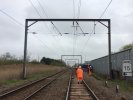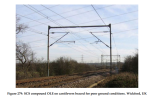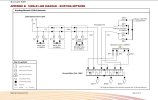kp_raileng
Member
Hello,
I am interested in gathering some resources on the existing Electrified Cambridge to King's Lynn route:
I have noticed that there are significant sections of the route where two-track portals have been used, such as between Newmarket Road / Dimmocks Cote and Holt Fen Level Crossings.
a). Why is this?
b). Is there any documentation explaining the reasoning behind the selection of portals for this section?
c). Is there any corresponding design for two-track portals in a current OLE design range (such as UKMS)?
Many Thanks.
I am interested in gathering some resources on the existing Electrified Cambridge to King's Lynn route:
I have noticed that there are significant sections of the route where two-track portals have been used, such as between Newmarket Road / Dimmocks Cote and Holt Fen Level Crossings.
a). Why is this?
b). Is there any documentation explaining the reasoning behind the selection of portals for this section?
c). Is there any corresponding design for two-track portals in a current OLE design range (such as UKMS)?
Many Thanks.





